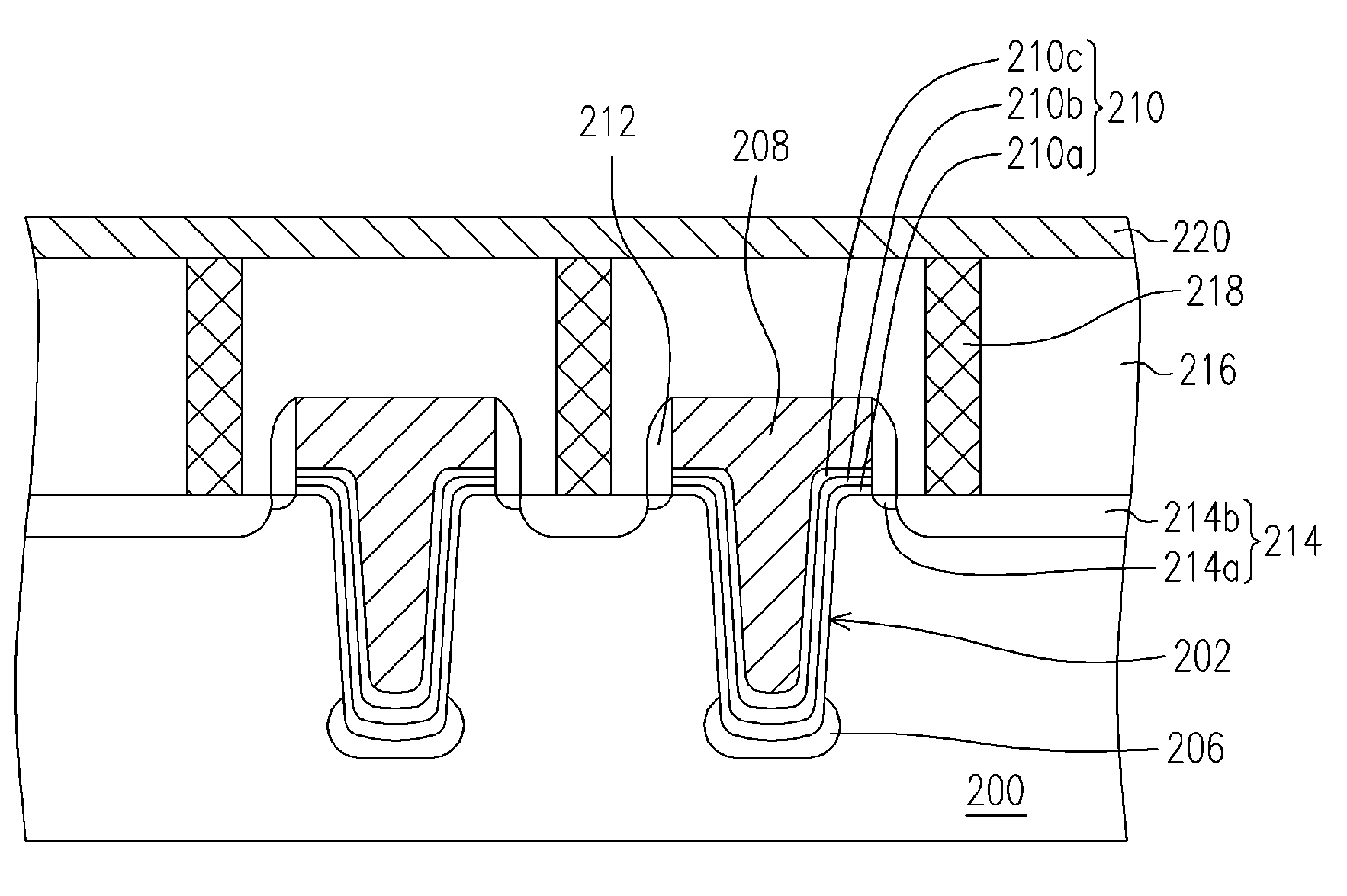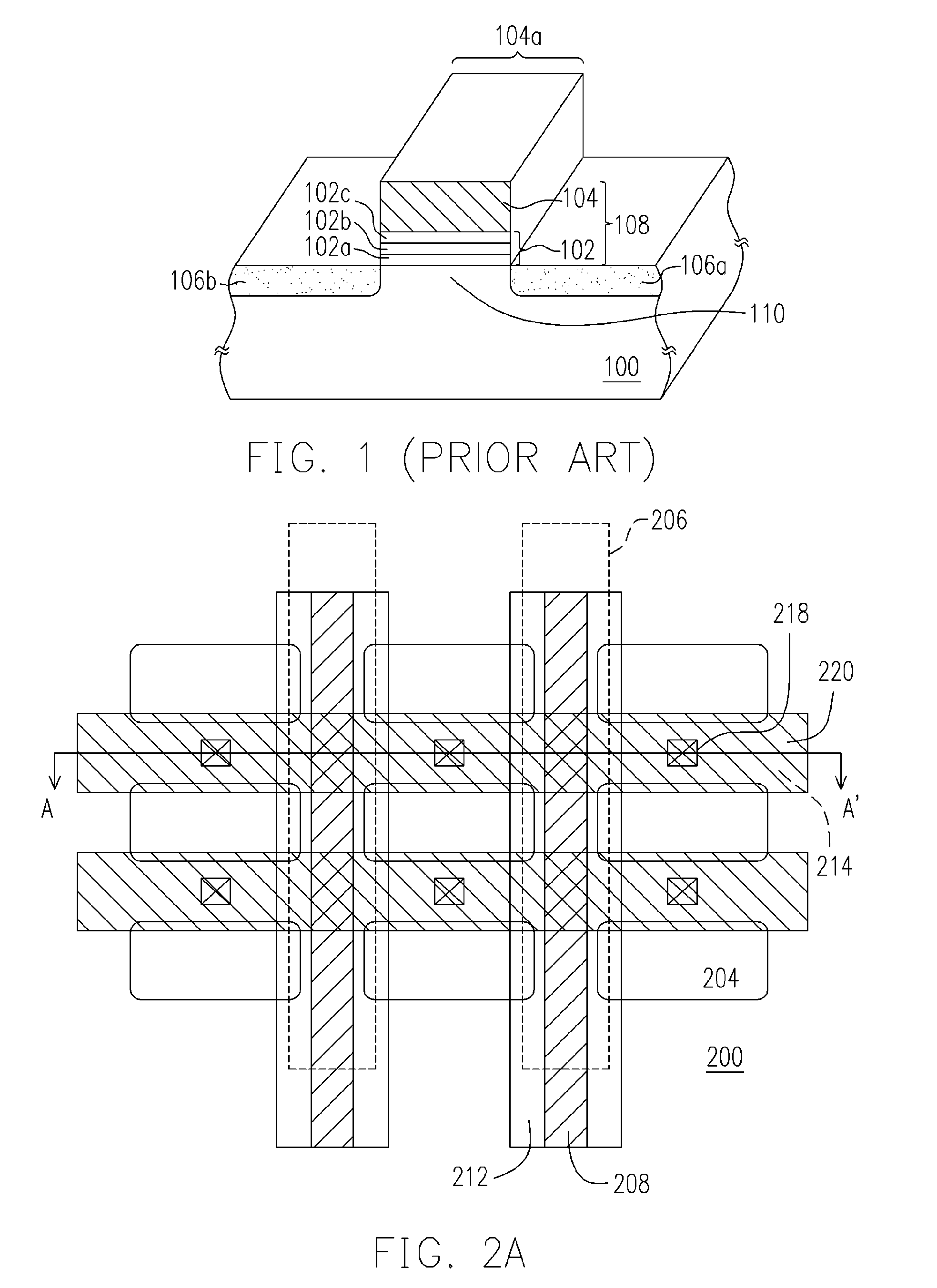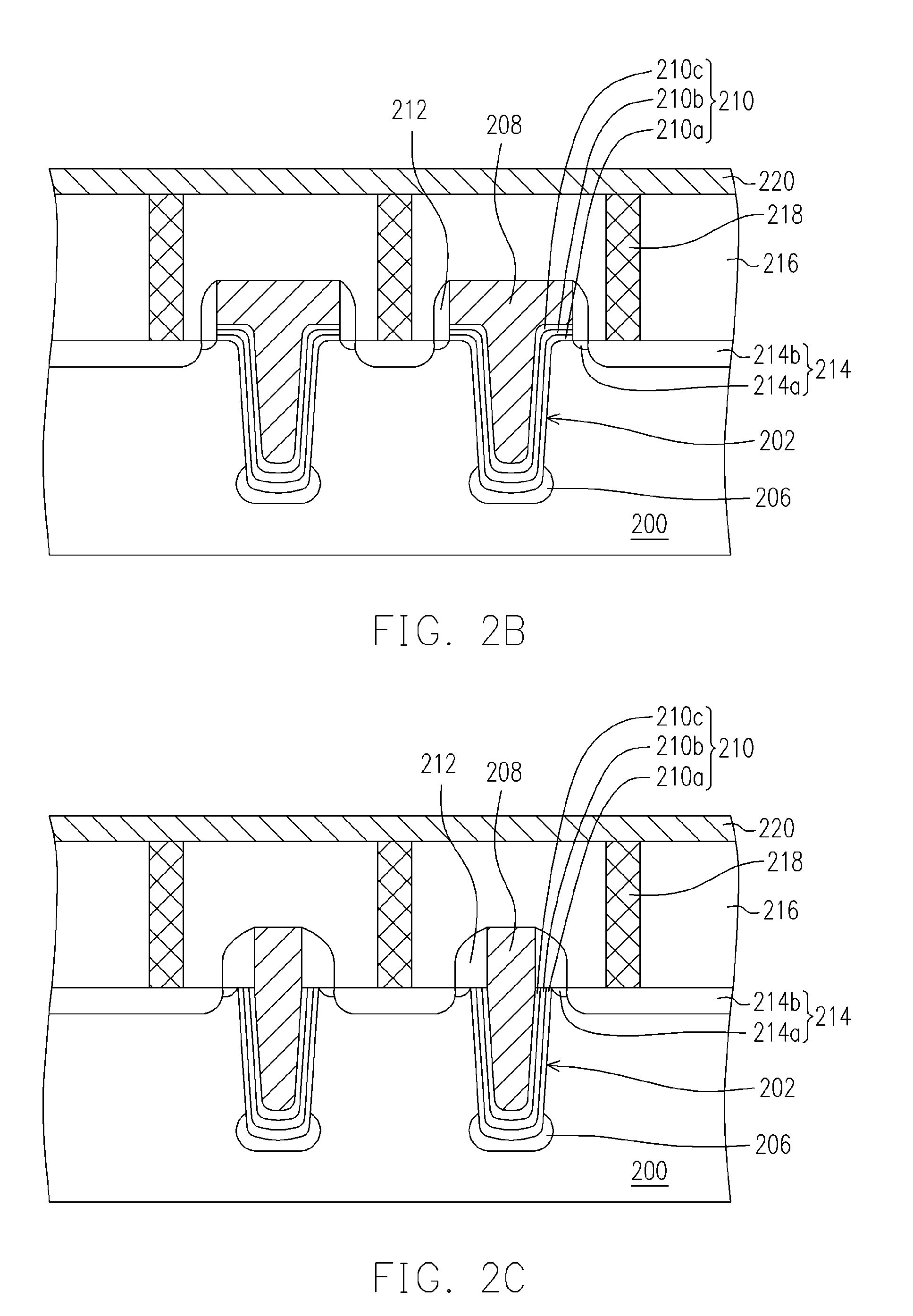Non-volatile memory cell and manufacturing method thereof
a memory cell and non-volatile technology, applied in the field of semiconductor memory devices, can solve the problems of reducing the size of the memory cell, affecting the reliability of the device, and eventually encountering critical dimension problems, so as to increase the integration of the device, increase the effective channel length and memory cell current, and facilitate the differentiation between different logic states
- Summary
- Abstract
- Description
- Claims
- Application Information
AI Technical Summary
Benefits of technology
Problems solved by technology
Method used
Image
Examples
Embodiment Construction
[0027]Reference will now be made in detail to the present preferred embodiments of the invention, examples of which are illustrated in the accompanying drawings. Wherever possible, the same reference numbers are used in the drawings and the description to refer to the same or like parts.
[0028]FIG. 2A is a top view showing the structure of a non-volatile memory cell according to one embodiment of the present invention. FIG. 2B is a schematic cross-sectional view of the non-volatile memory cell taken along line A–A″ of FIG. 2A. As shown in FIGS. 2A and 2B, the structure of the non-volatile memory cell includes a substrate 200, a device isolation structure 204, a source / drain region 206, a gate 208, a composite dielectric layer 210, a spacer 212, a source / drain region 214, an inter-layer dielectric layer 216, a contact plug 218 and a conductive line 220.
[0029]The substrate 200 is a silicon substrate, for example. The trench 202 is formed within the substrate 200. The device isolation s...
PUM
 Login to View More
Login to View More Abstract
Description
Claims
Application Information
 Login to View More
Login to View More - R&D
- Intellectual Property
- Life Sciences
- Materials
- Tech Scout
- Unparalleled Data Quality
- Higher Quality Content
- 60% Fewer Hallucinations
Browse by: Latest US Patents, China's latest patents, Technical Efficacy Thesaurus, Application Domain, Technology Topic, Popular Technical Reports.
© 2025 PatSnap. All rights reserved.Legal|Privacy policy|Modern Slavery Act Transparency Statement|Sitemap|About US| Contact US: help@patsnap.com



